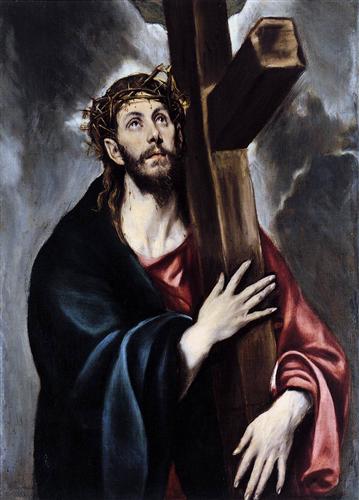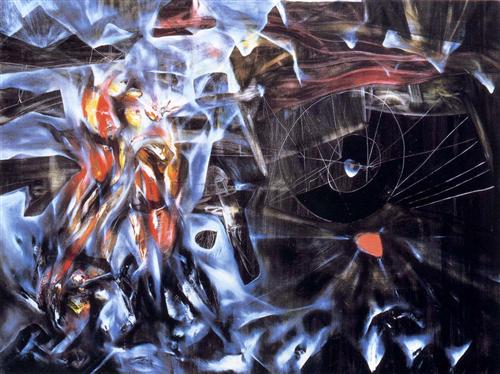Ancient South American Art (~2600BC- ~1492AD)
The Mayan civilization is both famous and infamous for its ritualistic, beautiful, and grotesque culture. The Mayan peoples were extremely religious. They used human sacrifice to appease the sun and rain gods, hoping for good crops in their agricultural society. Their art mainly involves deities and religious symbols, although purely decorative items are also present. The royal Mayas put great value in appearing wealthy and powerful, which is seen in their jewelry, clothing, and materials of jade, copper, and gold. Mayan Stelae is a type of sculpture unique to the Mayan people. Artists moved huge slabs of rock to different locations and carved intricate designs representing the people and their culture. Three-dimensional artwork dominated the Mayan artistic world. In addition to carvings, bright ceramics used for decoration, religion, and possible utilitarian purposes have been found. Here is an example of a stela, a ceramic piece, and a sculpture.

Fast forward thousands of years to the Aztec empire. The first Aztec emperor Moctezuma I ascended the throne in 1440. While the Aztecs drew their origins from the Nahua people of much earlier, they are the next unique step in artistic evolution. The Aztecs also worshipped the sun, and accordingly are known for using gold. Legends of Aztec gold have drawn treasure-hunters to the Mexican region for centuries. Aztecs also used stone, obsidian, and clay in their artwork. Their artwork tended to have more angular components than that of the Maya. Artwork was still mainly commissioned by royalty or for religious purposes. Here is a ceramic rendering of a Maize (corn) deity:

Jewelry was made from previous stones and metals like this bird head made of jasper.
Finally, we have the Inca culture in the Peru region. Inca art was influenced by the goldsmiths of the Lambayeque people. It served mostly practical or religious purposes. Because of the emphasis on gold as a medium, Inca art is often confused with Aztec art. Although the two cultures existed around the same time period, their styles were quite different. Again, the Sun (Inti) was the main deity, reflected in golden artwork. Here is an example of golden Inca jewelry.

Gold was also used for statues, although most were made of ceramic or stone. Inca textiles made of wool were also a prevalent form of art. The textiles were hand dyed using pigments from flowers, roots, and berries. Here is an example of Inca textiles, and a video showing the Inca
South American Art: Colonial Period (1492AD-~1850)
The South American world went through dramatic change after the Spanish first stepped foot on American shores in close to 1492. The Spanish brought European influences, including Roman Catholicism. Most regarded the indigenous peoples as pagan and backwards. Legal art reflected this change in philosophy. When the Spanish arrived, they found weaving, pottery , metals, mosaics, and feathers in native artwork. Any gold was taken from natives and melted down or sent back to Europe. A utilitarian style was adopted. The religious artwork of the past was now forbidden by the Roman Catholics, who instead commissioned engravings and sculptures of Jesus Christ and other important figures in Christianity. Intricate stone sculptures were used for colonial buildings. Codex paintings that were used as ritual manuscripts such as the one shown below were destroyed.
Many indigenous people chose to adapt. Art during the Colonial Period was a strange mix of cultures, where Christian imagery was conveyed through more familiar native symbolism. Take, for example, this crucifix-like sculpture. The shape of the cross and face of Jesus are clearly Christian, but the cross is made to appear like tree trunks and carved with naturalistic symbols.

In Peru, the famous textiles of the Incas somewhat survived Francisco Pizarro and his Spanish conquest. Conquistadors allowed natives to continue weaving textiles with abstract or geometric designs, but forbade references to pagan gods. The Spaniards were enamored with Peruvian silver, and commissioned silver pieces for the higher Spanish ranks. The most common artistic commission was of the ecclesial type. The Spanish wanted fresco paintings during the European Renaissance, and put the indigenous peoples’ carving skills to work with retables. Here is a fresco in the Franciscan Church at Tecamachalco.

The artistic style that followed the Spanish to South America is called mannerism. It is a style influenced by artificiality and elegance. In the style of El Greco, a famous Spanish artist, figures were highly stylized with elongated figures. Here is one of El Greco’s paintings, Christ Carrying the Cross to give you an idea of the mannerism artistic style.

With the mid-17th century came the Baroque period. At this time, many artists were mulattos, or mixed-race between indigenous and Spanish parents. This literal mix of cultures led to artwork that blended native culture and European style. The Baroque style is much more realistic, again with an emphasis on religious imagery. The so-called “father of Baroque” in Mexico was Sebastian López de Arteaga, whose painting Incredulity of Saint Thomas exemplifies the Baroque ideals.

The bodies are of realistic proportions, with warmer colors, and an overall more human aspect. Jesus Christ plays a central role in many of such paintings.
Finally, the neoclassical period of the 1800s revealed the Spaniard’s desperation to return to a time of glory and order. Relationships between Spain and its South American colonies were strained. Spanish authorities began ordering many neoclassical style statues of famous Spanish kings and generals to inspire respect and camaraderie in the peoples of South America. Neoclassical art has its roots in the Greek and Roman empires, where hierarchy and war ruled. The Mexican artist Manuel Tolsa taught neoclassical art and built this still-standing statue of King Charles IV

Modern South American Art (~1850- today)
In the modern era, South America has turned out a great deal of famous artists. South American art tends to focus on the culture and heritage of the region. The blend between indigenous and Spanish traditions also greatly influences modern artists. Here we will focus on a few major players. Frida Kahlo was a Mexican painter with an eccentric, to say the least, life. In the early 1900s, she experienced depression, and near-fatal accident, experimented with sexuality, and embraced masculinity. Her surrealist portraits are filled with love for her native Mexico and reflect her inner anguish and questions of identity. She is best known for her self-portraits, such as the one in the background of this page! Here is another self-portrait entitled Roots
Diego Rivera was a Mexican muralist of the early 20th century. He was in fact married to Frida Kahlo, although they both had several affairs. His murals have an astounding level of complexity. Political and celebrity figures often appear hidden in the paintings. Rivera loved symbolism and his country. To properly show just how huge and complex his murals are, here is his mural of Mexican history at the Mexico City National Palace.

Roberto Matta was a Chilean surrealist artist who explored the human mind through abstraction. Many of his paintings had political themes, and the distorted, darkened characters showed his understanding of the grotesqueness of politics. He also drew from mythical and natural sources, weaving together the everyday and fantasy worlds to form powerful paintings. Here is his Disasters of Mysticism

Cundo Burmudez was a famed Cuban painter. He was a Modernist, and his paintings contained many ties to Cuban culture. His paintings are composed of many warm colors, and depict the artificiality of everyday life. Here is his painting Barber Shop

Citations:
http://www.latina.com/lifestyle/our-issues/latino-artists-know#11
http://arcthemagazine.com/arc/wp-content/uploads/2014/02/tumblr_m2v2jcLEDQ1rrajnno1_1280.jpg
http://uploads6.wikiart.org/images/roberto-matta/disasters-of-mysticism.jpg!Blog.jpg
https://upload.wikimedia.org/wikipedia/commons/d/da/RiveraMuralNationalPalace.jpg
https://i.guim.co.uk/img/static/sys-images/Guardian/Pix/pictures/2015/4/10/1428682297106/Roots-by-Frida-Kahlo-009.jpg?w=620&q=85&auto=format&sharp=10&s=a4feb5bcc62fe6c2c4975d19f8500215
http://www.theguardian.com/commentisfree/2015/apr/13/sale-frida-kahlo-letters-grubby-violation
https://content.museodelprado.es/imagenes/Documentos/imgsem/59/592e/592e5ab2-9ea3-4074-a06d-23998cf94ce3/d11391bb-5723-4d98-bb41-76806d64089e.jpg
http://www.metmuseum.org/toah/works-of-art/1975.1.145
http://www.britannica.com/art/Latin-American-art#toc253319
https://www.youtube.com/watch?v=38kLEge7BOc
http://artgallery.yale.edu/collections/objects/24194
http://www.discover-peru.org/inca-art-forms/
http://www.nmai.si.edu/exhibitions/ancient/english/index.html
http://artgallery.yale.edu/collections/objects/10790
http://artgallery.yale.edu/collections/objects/51903
https://upload.wikimedia.org/wikipedia/commons/1/13/Stele51CalakmulMuseum.JPG
http://www.authenticmaya.com/images/Escuintla%20Woman.jpg